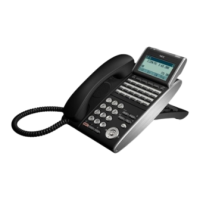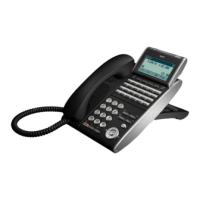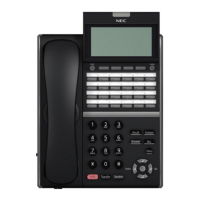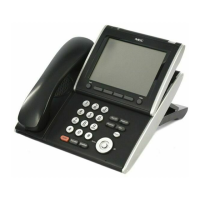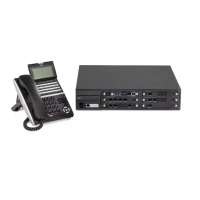UNIVERGE SV8300 Features and Specifications Manual (ISDN/Q-SIG)
NWA-033632-001, Issue 1
Page 43
Q-SIG Circuit Switched Basic Call - ETSI Version
3. Transparency
Note 1: When there is no called party number from ISDN, PBX defines the called party number.
Note 2: In the connection from Q-SIG to ISDN, PBX adds or deletes digits of the called party number.
Note 3: CCIS in this section means CCIS without ISDN transmitting information.
Operating Procedure
No manual operation is required.
Service Conditions
1. Redundancy structure
a. One D channel can control maximum 30 or 23 B-channels.
b. Control using the nB + D interface is available.
2. The multi-rate bearer service is not available.
3. The User-to-User Signaling (UUS) is not available.
Interactions
The following services can be provided in conjunction with this feature:
a. Common station/voice service
Call Forwarding - All Calls
Note 1
Call Forwarding - Busy Line Note 1
Call Forwarding - No Answer Note 1
Caller ID Display Note 1
Direct-In Termination Note 1
Call Transfer - All Calls Note 1
Hot Line Note 1
Do Not Disturb Note 1
Calling Number Display
b. Attendant Console service
System Speed Dialing
Note 2
Call Queuing
TYPE OF CALL
MANDATORY INFORMATION
ELEMENTS
NON-MANDATORY INFORMATION
ELEMENTS
Q-SIG Q - SIG
Conforming to ETS 300 172 Conforming to ETS 300 172
ISDN Q-SIG
(1) Message Type
(2) Called Party Number Note 1 Note 2
Calling Party Number
CCIS Q-SIG
Note 3
Called Party Number Calling Party Number
ACIS Q-SIG
Called Party Number None
→
→
→
→

